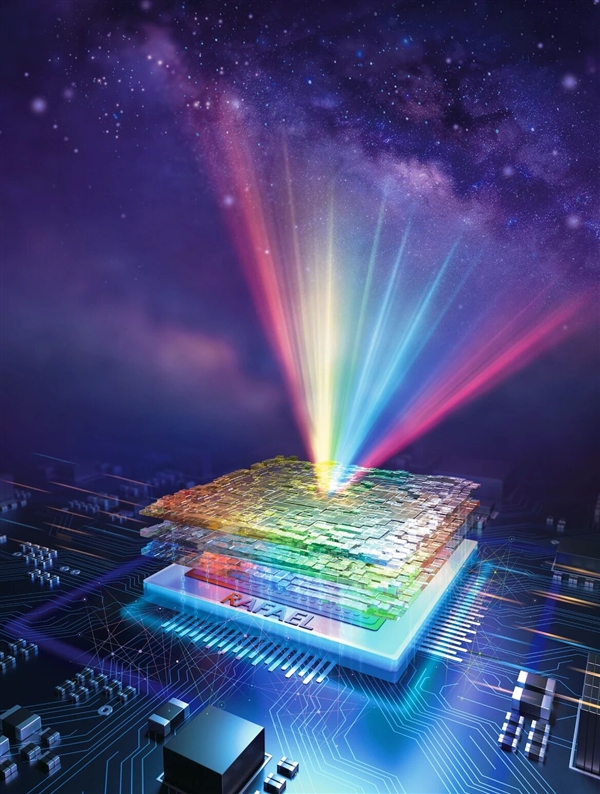https://www.nature.com/articles/s41586-025-09591-x
Abstract
Spectroscopy is a pivotal tool for determining the physical structures and chemical compositions of materials and environments, and it is commonly used across diverse scientific fields1,2,3,4,5,6,7,8,9,10,11,12,13,14,15,16. Conventionally, spectroscopic techniques rely on narrow slits or gratings, which impose a trade-off between spectral resolution and optical transmittance17,18,19,20,21,22, thus precluding measurements with simultaneous high sensitivity and high efficiency. Here we introduce RAFAEL, a sub-ångström ultra-high-transmittance snapshot spectroscopic technique, which targets this trade-off with integrated and reconfigurable photonics based on lithium niobate. Its design comprises bulk lithium niobate as an interference mask with a pixel-wise electrically tunable spectral response and delivers picometre-scale modulation with a high optical transmittance. Our approach achieves 88-Hz snapshot spectroscopy with a spectral resolution of approximately 0.5 Å at 400–1,000 nm (R = 12,000), spatial resolution of 2,048 × 2,048 and 73.2% total optical transmittance. Compared with state-of-the-art spectroscopic imagers23,24,25,26,27,28,29,30,31,32,33,34, RAFAEL offers double the total transmittance and a nearly two orders of magnitude improvement in spectral resolving power, as verified by extensive experiments. In particular, RAFAEL captured sub-ångström spectra, including all atomic absorption peaks, of up to 5,600 stars in a single snapshot, indicating ×100–10,000 improvement in observational efficiency compared with world-class astronomical spectrometers17,18,19,20,21. This high-performing yet easily integrated snapshot spectroscopic method could drive advances in fields ranging from material science to astrophysics.




